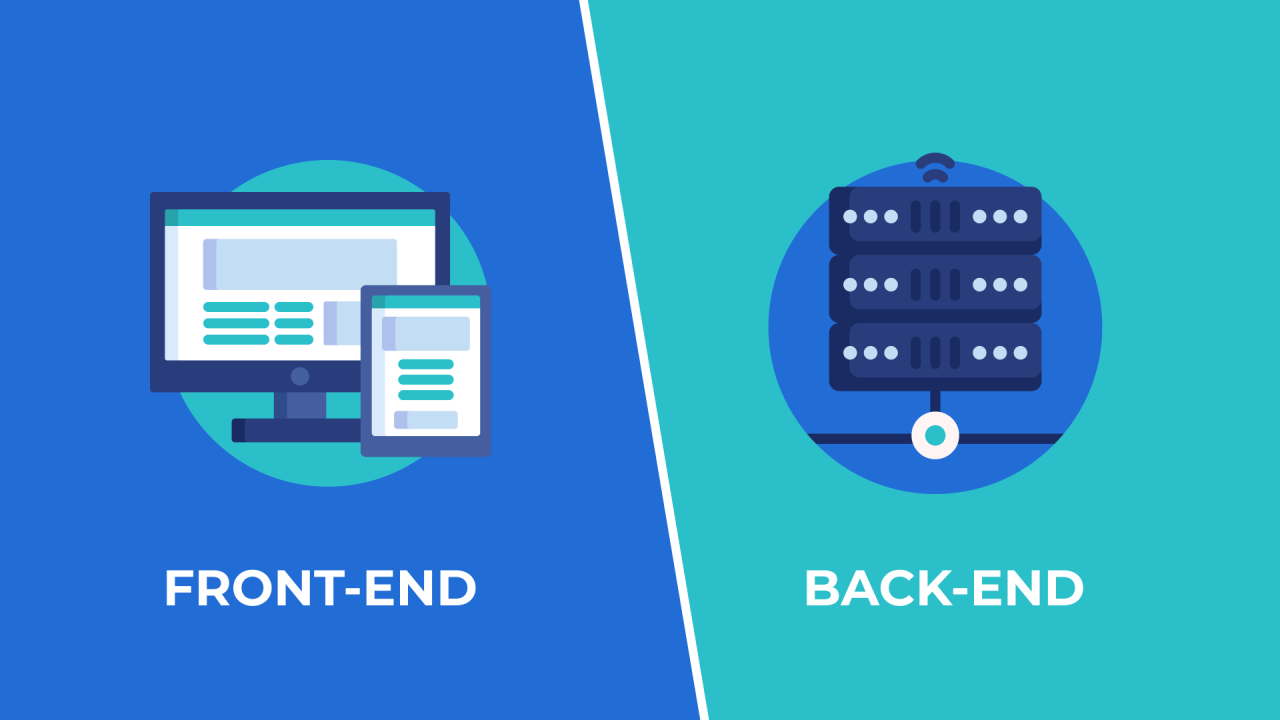Full stack developers are the modern-day coding ninjas, wielding expertise across the entire spectrum of web development. They’re not just front-end wizards conjuring up beautiful user interfaces, nor are they solely back-end gurus orchestrating the magic behind the scenes. Instead, they seamlessly blend both worlds, possessing a deep understanding of everything from the visual elements users interact with to the intricate server-side logic that powers the application.
This guide will equip you with a solid understanding of the skills, technologies, and career paths involved in becoming a successful full stack developer.
This journey will cover essential front-end technologies like HTML, CSS, and JavaScript, along with popular frameworks such as React, Angular, and Vue.js. We’ll then delve into the back-end realm, exploring server-side languages (Python, Node.js, Java, PHP), databases (SQL and NoSQL), and essential frameworks like Django and Express.js. Crucially, we’ll also discuss DevOps practices, deployment strategies, and the importance of version control, offering a holistic view of the full stack developer’s role.
Defining Full Stack Development: Full Stack Developer
Full-stack development encompasses the entire process of building and deploying web applications, from the user interface to the underlying database. It requires a broad skillset, bridging the gap between front-end and back-end development.
Full-Stack Developer Skill Sets
Full-stack developers possess a diverse range of skills, including proficiency in front-end technologies (HTML, CSS, JavaScript, and related frameworks), back-end languages and frameworks (like Python, Node.js, or Java), database management (SQL and NoSQL), and DevOps practices.
Front-End vs. Back-End Development
Front-end development focuses on the user interface – what the user sees and interacts with. Back-end development handles the server-side logic, databases, and APIs. A full-stack developer is proficient in both, allowing them to understand and contribute to all aspects of an application.
Common Full-Stack Technologies
| Front-End | Back-End | Database | DevOps |
|---|---|---|---|
| HTML, CSS, JavaScript | Node.js, Python, Java | MySQL, PostgreSQL, MongoDB | Docker, Kubernetes, Git |
| React, Angular, Vue.js | Express.js, Django, Spring | SQL Server, Oracle | AWS, Azure, GCP |
Essential Front-End Technologies
The front-end forms the user interface, directly impacting user experience. Mastery of HTML, CSS, and JavaScript is crucial, enhanced by the use of modern frameworks.
HTML, CSS, and JavaScript
HTML structures the content, CSS styles its appearance, and JavaScript adds interactivity and dynamic behavior. These three form the foundation of any web application’s front-end.
JavaScript Frameworks, Full stack developer
Frameworks like React, Angular, and Vue.js streamline front-end development by providing reusable components and architectural patterns, making it easier to build complex and maintainable user interfaces.
Common Front-End Tasks and Technologies
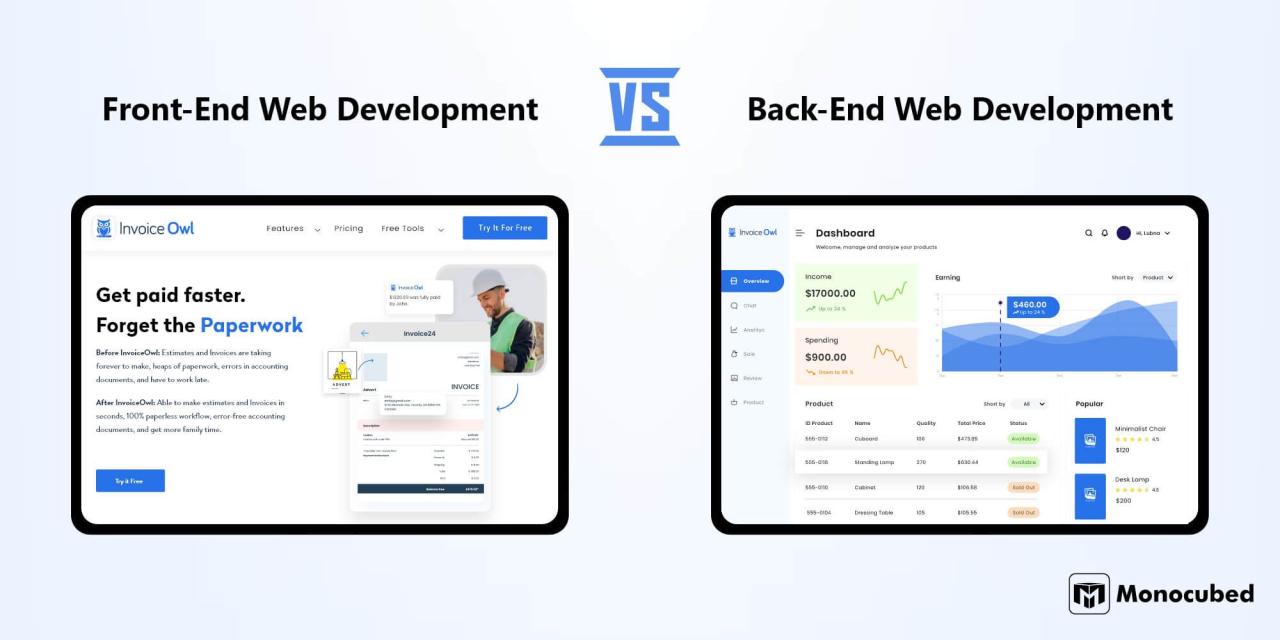
- Building interactive forms: JavaScript, HTML
- Creating responsive layouts: CSS, JavaScript
- Implementing animations: CSS, JavaScript libraries (e.g., GSAP)
- Integrating third-party APIs: JavaScript, Fetch API
Essential Front-End Tools and Libraries
- npm (Node Package Manager)
- Webpack or Parcel (module bundlers)
- Linters (ESLint, Stylelint)
- Version control (Git)
Essential Back-End Technologies
The back-end handles the server-side logic, data processing, and interaction with databases. Choosing the right server-side language, framework, and database is crucial for application scalability and performance.
Server-Side Languages and Frameworks
Popular server-side languages include Python (with frameworks like Django and Flask), Node.js (with Express.js), Java (with Spring), and PHP (with Laravel). Each offers different strengths and is suited for various project needs.
So you want to be a full-stack developer? It’s a challenging but rewarding path! You’ll need to master both front-end and back-end technologies. It’s a completely different skillset than, say, dealing with the tragic news like this story about a British victim of a New Orleans attack, British victim of New Orleans attack is stepson of William and Harry’s , which highlights how unpredictable life can be.
But back to coding – remember consistent practice is key to becoming a successful full-stack developer.
Database Technologies
Databases are essential for storing and managing application data. SQL databases (like MySQL, PostgreSQL) are relational, while NoSQL databases (like MongoDB, Cassandra) are non-relational, each with its own advantages and disadvantages.
Database System Comparison
| Database System | Type | Strengths | Weaknesses |
|---|---|---|---|
| MySQL | SQL | Mature, widely used, good performance for relational data | Can be less scalable than NoSQL options for certain use cases |
| MongoDB | NoSQL | Highly scalable, flexible schema, good for large datasets | Can be less performant for complex relational queries |
| PostgreSQL | SQL | Robust, feature-rich, supports advanced data types | Steeper learning curve compared to MySQL |
DevOps and Deployment
DevOps practices streamline the development and deployment process, improving efficiency and collaboration. Understanding deployment methods and tools is essential for a full-stack developer.
DevOps Practices
DevOps emphasizes automation, continuous integration/continuous delivery (CI/CD), and collaboration between development and operations teams. This leads to faster releases and improved application stability.
Deployment Methods and Tools
Docker provides containerization for consistent deployment environments, while Kubernetes orchestrates container deployments across multiple machines. Cloud platforms like AWS, Azure, and GCP offer various deployment services.
Version Control
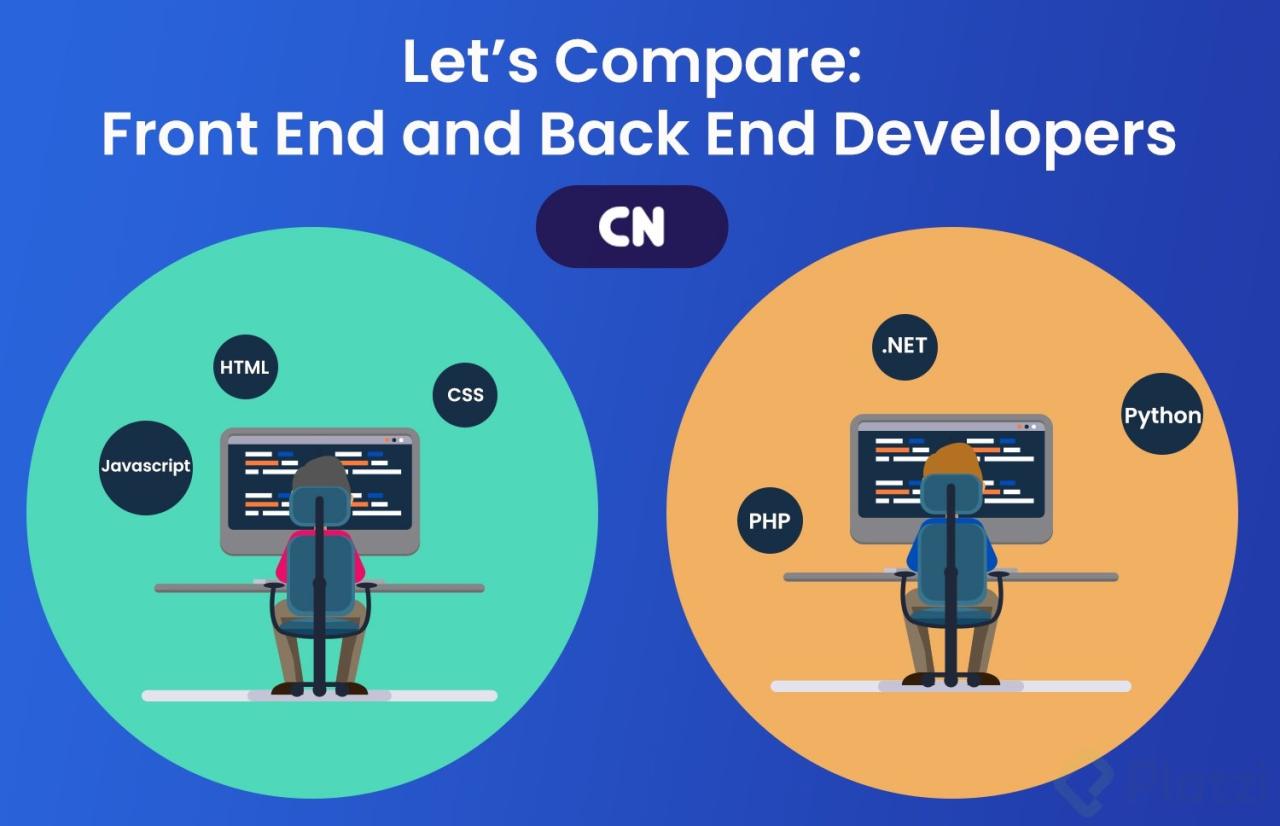
Git is the industry-standard version control system, essential for managing code changes, collaborating with other developers, and tracking project history.
Best Practices for Deployment and Maintenance
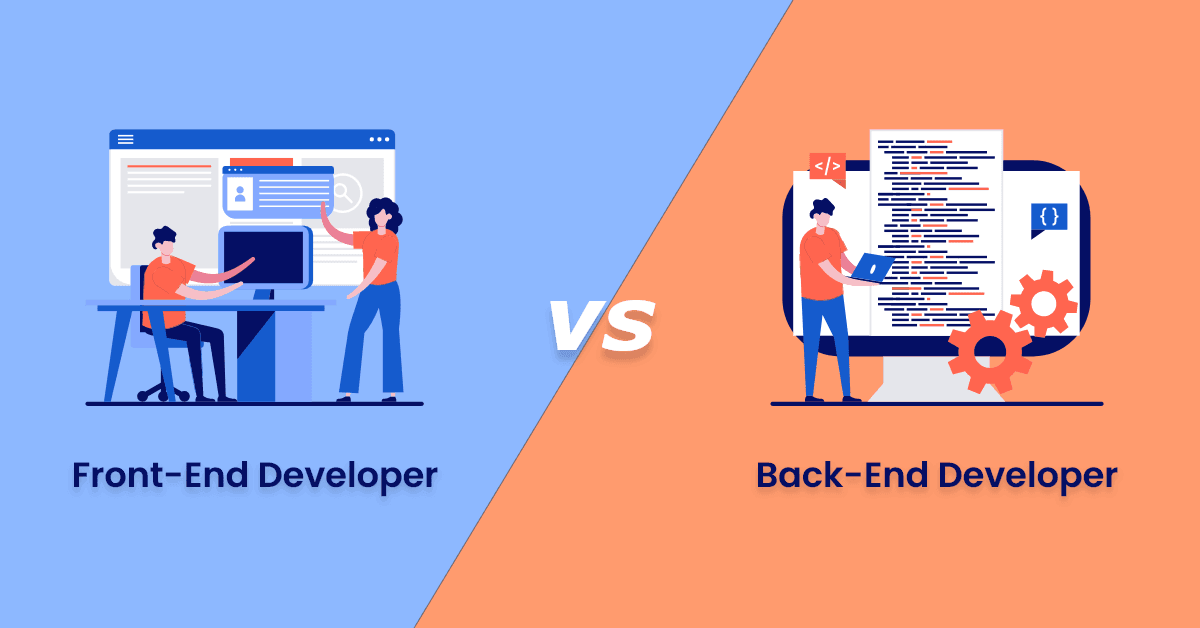
- Automated testing
- Monitoring and logging
- Regular updates and security patches
- Rollback strategies
Full Stack Developer Career Paths
The full-stack developer role offers diverse career paths, with opportunities for specialization and advancement. Salary and job market trends vary based on experience and location.
Career Paths and Salary Ranges
Junior full-stack developers typically focus on learning and gaining experience. Mid-level developers take on more responsibility and leadership roles. Senior developers often specialize in architecture, mentorship, and team management. Salary ranges vary widely depending on location, experience, and company size. Entry-level positions can start around $60,000 annually, while senior roles can reach $150,000 or more.
Junior, Mid-Level, and Senior Roles
Junior developers focus on implementing features and learning from senior team members. Mid-level developers contribute significantly to design and implementation, often leading small projects. Senior developers architect systems, mentor junior team members, and ensure technical excellence.
Career Progression
A typical career progression might involve starting as a junior developer, progressing to mid-level with increased responsibilities, and eventually becoming a senior developer or specializing in a particular area (e.g., architecture, security).
Illustrative Example: E-commerce Application
Building a simple e-commerce application illustrates the integration of various full-stack technologies. This example showcases the interplay between front-end, back-end, and database components.
E-commerce Application Architecture
The front-end (using React, for example) would display product catalogs, shopping carts, and checkout forms. The back-end (perhaps Node.js with Express.js) would handle user authentication, order processing, and payment gateway integrations. A database (like PostgreSQL) would store product information, user accounts, and order details. The application would use APIs to connect the front-end and back-end components.
So you wanna be a full stack developer? It’s a demanding but rewarding path, requiring skills across the board. Even amidst the intense coding, remember to prioritize your health; check out this article about Loose Women’s Gloria Hunniford sharing how stark doctor’s warning Loose Women’s Gloria Hunniford shares how stark doctor’s warning reminds us all to balance work and well-being.
Ultimately, a healthy and balanced life is key to long-term success as a full stack developer.
Front-End Components
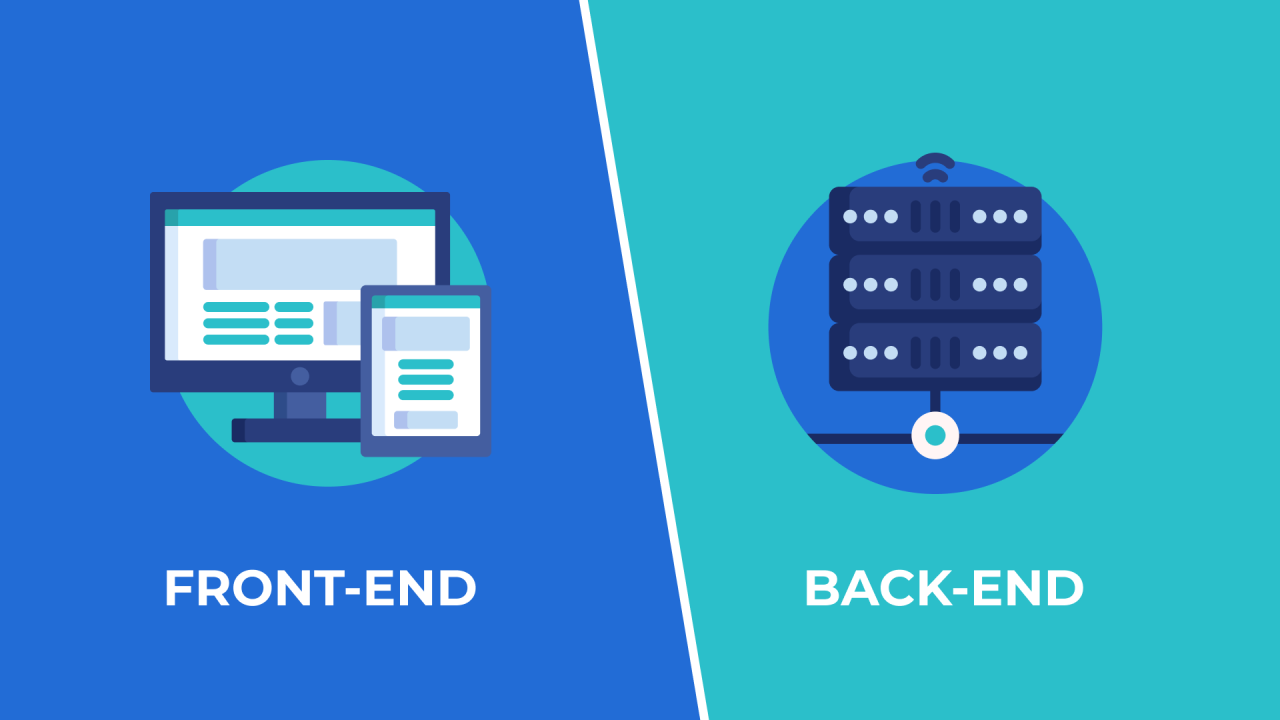
The front-end would be responsible for displaying products, managing the shopping cart, and providing a user-friendly checkout experience. This involves using HTML for structure, CSS for styling, and JavaScript (possibly with React) for interactivity and dynamic updates.
Back-End Components
The back-end would handle user authentication, product catalog management, order processing, payment integration, and data persistence in the database. This would involve server-side logic, API endpoints, and database interactions using a language like Node.js and a framework like Express.js.
Database Components
The database (PostgreSQL, for example) would store product information (name, description, price, images), user accounts (username, password, address), and order details (order ID, customer ID, products, total price, status).
So you want to be a full stack developer? It’s a challenging but rewarding path, requiring diverse skills. You need to know front-end and back-end development, and even database management. Think of it like managing a hockey team; you need all the players, just like how Canucks place star F Pettersson on retroactive IR, recall G Silovs shows the need for a balanced roster.
Ultimately, a successful full stack developer, much like a winning hockey team, relies on a strong and versatile skill set.
Architectural Visualization
Imagine a three-layered architecture: a presentation layer (front-end), an application layer (back-end), and a data layer (database). The front-end communicates with the back-end through APIs, and the back-end interacts with the database to manage data. This layered architecture promotes modularity, maintainability, and scalability.
Closing Summary
Becoming a full stack developer requires dedication and a thirst for continuous learning, but the rewards are substantial. The ability to handle both front-end and back-end development opens doors to diverse career paths, from building innovative web applications to shaping the digital landscape. By mastering the skills and technologies Artikeld in this guide, you’ll be well-equipped to navigate the exciting world of full stack development and contribute meaningfully to the ever-evolving digital world.
Remember to embrace continuous learning and stay updated with the latest advancements in this dynamic field.
Detailed FAQs
What’s the average salary for a full stack developer?
Salary varies greatly based on experience, location, and company size. Expect a wide range, with significant increases as you gain experience.
How long does it take to become a full stack developer?
There’s no set timeframe. It depends on your prior experience, learning pace, and dedication. Expect a significant investment of time and effort.
What are the most in-demand skills for full stack developers?
Proficiency in JavaScript, a back-end language (like Python or Node.js), database management (SQL and/or NoSQL), and familiarity with cloud platforms are highly sought after.
Is a computer science degree necessary?
While helpful, it’s not strictly required. Many successful full stack developers learn through bootcamps, online courses, and self-study.
